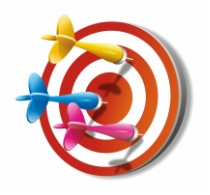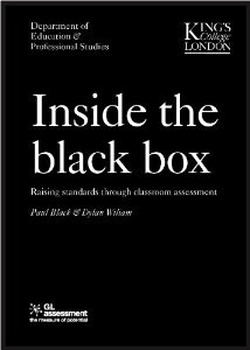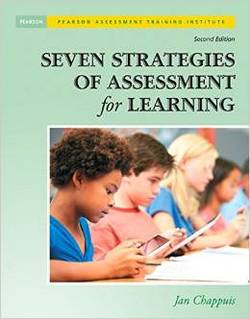Assessment for Learning
A blog for busy K-16 educators where we share ideas, strategies, and best assessment practices
that move the learning forward.
Cathy Box, PhD
that move the learning forward.
Cathy Box, PhD
|
Lubbock Boys and Girls Clubs
3221 59th St. Lubbock, TX 79413 806-792-2889 Literacy Lubbock Mahon Library 2nd Floor 1306 9th St Lubbock, TX 79401 806-775-3636 Guadalupe-Parkway Neighborhood Centers 123 North Avenue N Lubbock, Texas 79401 806-765-9713 Early Learning Centers of Lubbock 1639 Main Street Lubbock, TX 79401 806-765-9981 Texas Boys Ranch 4810 N County Road 2800 Lubbock, TX 79403 806-747-3187
6 Comments
 It doesn’t matter if you teach college world history or 3rd grade math, it should be perfectly clear to your students what they are expected to learn and be able to do, and what success looks like. It should never be a mystery! For some reason there are still those teachers who just dive right in and expect the students to follow blindly until they get to the end. We've already talked about backwards design and how important it is to start with the end in mind. An effective teacher decides even before starting the unit what the end goal is and what mastery will look like, then that information guides their scaffolding of the lessons. Why not share the learning targets with the students? If you share with your students exactly what the learning targets are and what success looks like, I promise you, they are much more likely to reach that target and do it well. Doesn't it just make sense? If a friend drove up to your house and you hopped in the car, the first thing you'd want to know is "where are we going?" Or here's a sports analogy: A few years ago my daughter was on the cross country team and they had a new coach who was unfamiliar with routes around school. So she had the runners just follow her in her car as she mapped out the two miles for them to run. My daughter's time was terrible at the end and she was NOT HAPPY. She told me later that "it's really hard for me to push myself when I can't even see the finish line…" and that resonated with me and my classroom teaching and assessing. It's much more difficult for students to push themselves if they don’t have any idea where they are going. Bottom line - learning targets and criteria for success should be established early and communicated often. (I recommend Moss and Brookhart's Learning Targets: Helping Students Aim for Understanding in Today's Lesson.) There are MANY ways that that this can be accomplished but I'll share a few practical ways and you can take it from there. Elementary classrooms Before you begin your unit, rewrite your state standard into learning targets with success criteria using kid friendly language. Post them prominently in the room and refer to them before you begin the lesson and most certainly at the end of the lesson. Better yet, provide them with a list before you start the unit and have them self-assess through traffic lighting before and after instruction. Click here to see an example. Here's a third grade math standard in Texas. (10) Personal financial literacy. The student applies mathematical process standards to manage one's financial resources effectively for lifetime financial security. The student is expected to: (A) distinguish between fixed and variable expenses; Seriously, if you write that on the board and expect it to make sense to an 9 year old… Let's write it in language that a 3rd grader can understand. Learning Target We are learning how to manage money so that we can live comfortably for our whole lives. Success criteria: (Particular to A)
Secondary classrooms Just like in elementary, rewrite your state standards into learning targets and success criteria using student friendly language. (It would be really effective if you had your students help you do this.) Provide each student with a handout that has LTs and SC listed and have them self-assess through traffic lighting. Students should keep up with their own progress related to each I Can statement. Here's a high school Biology standard in Texas - (6) Science concepts. The student knows the mechanisms of genetics, including the role of nucleic acids and the principles of Mendelian Genetics. The student is expected to: (F) predict possible outcomes of various genetic combinations such as monohybrid crosses, dihybrid crosses and non-Mendelian inheritance; Learning Target We are learning how Mendelian genetics work, including the role of DNA and RNA in inheritance. Success Criteria: (Particular to F)
College classrooms Many college courses are guided by state or federal requirements for certification purposes. Some courses are not, yet each discipline has overarching goals or objectives that guide their instruction. In my classes, I have taken our state competencies and reworded them into language that is easier to understand then added success criteria. Click here to see the handout I give students in one of my classes at the beginning of the semester. They traffic light each success criteria, and at the end of the semester provide an evidence portfolio that demonstrates progress or mastery of each I Can statement. The students also work in groups to create posters that illustrate each learning target and we post them around them room. I refer to them frequently. Here's a Texas Education Agency competency for pre-service teachers - 003 The teacher understands procedures for designing effective and coherent instruction and assessment based on appropriate learning goals and objectives. Although this is not too difficult to understand, here's what I've written: Learning Target We are learning how to design effective lessons and assessments that make sense and are based on the TEKS. Success Criteria
As the instructor for this course, I know what my students need to be able to do to demonstrate mastery of Competency 003. That information then dictates the learning activities. And as you can guess, my grades are specific to mastery of each objective…but that's for another blog….another day. Just give it a try, friends! You will be amazed at how much better your students perform and how focused and intentional you are about your instruction. It is truly transforming.  By now, if you poke your head out of your classroom at all you've heard the term "formative assessment". It's been one of the buzzwords in education for the last decade, especially after the release of work by Black and Wiliam (Assessment and Classroom Learning, 1998). This article was a game changer in so many ways and implications are summarized in their booklet Inside the Black Box. Black and Wiliam described formative assessment as all those activities undertaken by teachers, and by their students in assessing themselves, which provide information to be used as feedback to modify the teaching and learning activities in which they are engaged. Such assessment becomes 'formative' when the evidence is actually used to adapt the teaching work to meet the needs. Unfortunately the term "formative assessment" has been hijacked and distorted in some cases by for-profit organizations who want to sell you formative assessment instruments. Many in education now call it Assessment for Learning. Even the name is telling. It's assessment that moves the learning forward, as opposed to Assessment of Learning that does not. It's a process, not a product. Jan Chappuis, in her book Seven Strategies of Assessment for Learning described it as formal and informal processes teachers and students use to gather evidence for the purpose of informing next steps in learning. I teach an assessment class for pre-service teachers at my University and use her book as our guide to implementing Assessment for Learning (AfL) strategies in the classroom. I also use the Seven Strategies when I work with in-service teachers. There are many other approaches to implementing formative assessment or AfL in the classroom - especially the five strategies suggested by Dylan Wiliam himself. You can't go wrong there. I could cite dozens and dozens of research studies about the effectiveness of formative assessment (yes, I plan to use the terms interchangeably) but I won't do so in this blog. Contact me if you need more information. But the bottom line: research tells us, and I know from my own research projects and personal experiences as a classroom teacher and college professor that IT WORKS in improving the learning. Students achieve more and reach higher levels across the board. It doesn't matter if they are "low achieving" or "high achieving" students. They all reach a new level. But it is especially powerful for students who are not considered the best and the brightest. Why? You may ask. Assessment for Learning transcends the acquisition of knowledge and empowers students in their own learning. Isn't that what education is about? Nothing is more fulfilling to us as teachers than the realization that we have guided students to take control of their education and helped them become self-directed learners in their own right - regardless of the academic subject, their IQ, their learning style, etc. Assessment for Learning does that - if implemented properly in the classroom. So that begs the question - what is it and how do I implement it? Here's an overview of the Seven Strategies. In future blogs, we'll go into depth and look at ways to implement seamlessly into the classroom. Hang with me and we'll get there!  Seven Strategies of Assessment for Learning Where am I going?
Black, P., & Wiliam, D. (1998a). Assessment and classroom learning. Assessment in
Education: Principles, Policy & Practice, 5(1), 7-75. Black, P., & Wiliam, D. (1998b). Inside the black box: Raising standards through classroom assessment. London: nferNelson Publishing Company. Chappuis, J. (2015). Seven strategies of assessment for learning (2nd ed). Hoboken, N.J.: Pearson Education, Inc. |
Follow me at:
AuthorI am a former science teacher and currently work at Lubbock Christian University as the QEP Director and in the School of Education preparing future teachers. I am passionate about helping teachers find practical ways to improve learning! Archives
January 2018
|
